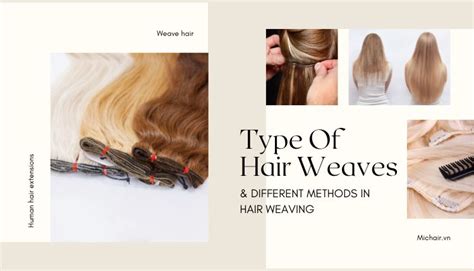Are you struggling with thinning hair? You’re not alone. According to the American Academy of Dermatology, approximately 40% of men and 50% of women experience hair loss by age 50. Fortunately, there are a number of effective treatments available, including hair weaves.

Hair weaves are extensions that are sewn or glued into your natural hair. They can be made from human hair, synthetic hair, or a blend of the two. Human hair weaves are more expensive, but they look and feel more natural. Synthetic hair weaves are less expensive, but they can be more difficult to style and maintain.
Hair weaves offer a number of benefits for people with thinning hair:
- Increased volume: Weaves can instantly add volume to your hair, giving you a fuller, more youthful appearance.
- Lengthened hair: Weaves can also be used to lengthen your hair, which can help to create the illusion of thicker hair.
- Improved hair health: Weaves can protect your natural hair from damage caused by heat styling, chemical treatments, and environmental factors.
- Concealed hair loss: Weaves can help to conceal hair loss, giving you a more confident appearance.
There are a variety of different types of hair weaves available, including:
- Clip-in weaves: Clip-in weaves are the easiest type of weave to apply and remove. They are simply clipped into your natural hair, and they can be styled just like your own hair.
- Tape-in weaves: Tape-in weaves are applied using a special type of tape that is attached to your natural hair. They are more durable than clip-in weaves, but they can be more difficult to remove.
- Sew-in weaves: Sew-in weaves are applied by sewing them into your natural hair. They are the most durable type of weave, but they can also be the most damaging.
- Fusion weaves: Fusion weaves are applied using a heated adhesive that bonds the extensions to your natural hair. They are the most permanent type of weave, but they can also be the most expensive.
The best type of hair weave for you will depend on a number of factors, including your hair type, your desired length and volume, and your budget. If you have fine or thinning hair, it is important to choose a weave that is lightweight and gentle on your hair. You should also avoid weaves that are too long or too heavy, as these can put strain on your natural hair.
Hair weaves should always be applied by a professional hairstylist. The process can take several hours, depending on the type of weave you choose.
Here are the basic steps involved in applying a hair weave:
- Your hairstylist will section your natural hair into small braids or cornrows.
- The extensions will be attached to the braids or cornrows using the method of your choice (sewing, taping, gluing, or bonding).
- Once the extensions are in place, your hairstylist will trim and style your hair to blend it with your natural hair.
Hair weaves require special care to keep them looking their best. Here are a few tips:
- Wash your hair regularly: You should wash your hair with a gentle shampoo and conditioner every 2-3 days. Avoid washing your hair too often, as this can strip the natural oils from your hair and scalp.
- Use a wide-tooth comb: When brushing your hair, use a wide-tooth comb to avoid snagging or tangling the extensions.
- Avoid heat styling: Heat styling can damage hair extensions, so try to avoid using hot tools as much as possible.
- Be careful when swimming: Chlorine and salt water can damage hair extensions, so be sure to wear a swim cap when swimming.
Here are a few common mistakes to avoid when wearing hair weaves:
- Don’t pull on your extensions: This can loosen the extensions and cause them to fall out.
- Don’t sleep with your hair in a ponytail or bun: This can put strain on the extensions and cause them to break.
- Don’t use harsh chemicals on your hair: Harsh chemicals can damage hair extensions, so avoid using them.
- Get regular trims: Regular trims will help to keep your hair weaves looking their best and prevent them from becoming too heavy.
Here are a few frequently asked questions about hair weaves:
- How long do hair weaves last? Hair weaves can last for 3-6 months, depending on the type of weave you choose and how well you care for it.
- Can I wear hair weaves with fine or thinning hair? Yes, you can wear hair weaves with fine or thinning hair. However, it is important to choose a weave that is lightweight and gentle on your hair.
- How much do hair weaves cost? The cost of hair weaves varies depending on the type of weave you choose, the length of the extensions, and the experience of your hairstylist.
- Can I dye hair weaves? Yes, you can dye hair weaves. However, it is important to use a dye that is specifically designed for hair extensions.
- Can I swim with hair weaves? You can swim with hair weaves, but it is important to wear a swim cap to protect them from chlorine and salt water.
- Can I sleep with my hair in a ponytail or bun? It is not advisable to sleep with your hair in a ponytail or bun when you are wearing hair weaves. This can put strain on the extensions and cause them to break.
Hair weaves can be a great way to add volume, length, and style to thinning hair. However, it is important to choose the right type of weave and to care for it properly. By following the tips in this article, you can enjoy the benefits of hair weaves for years to come.
